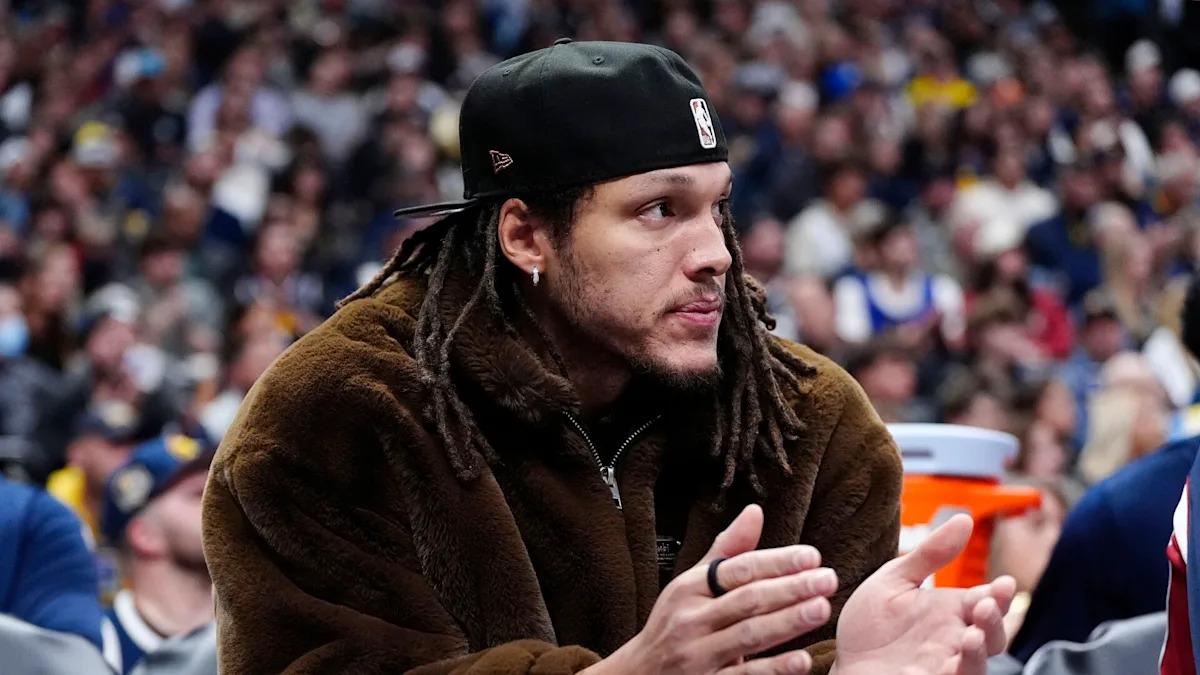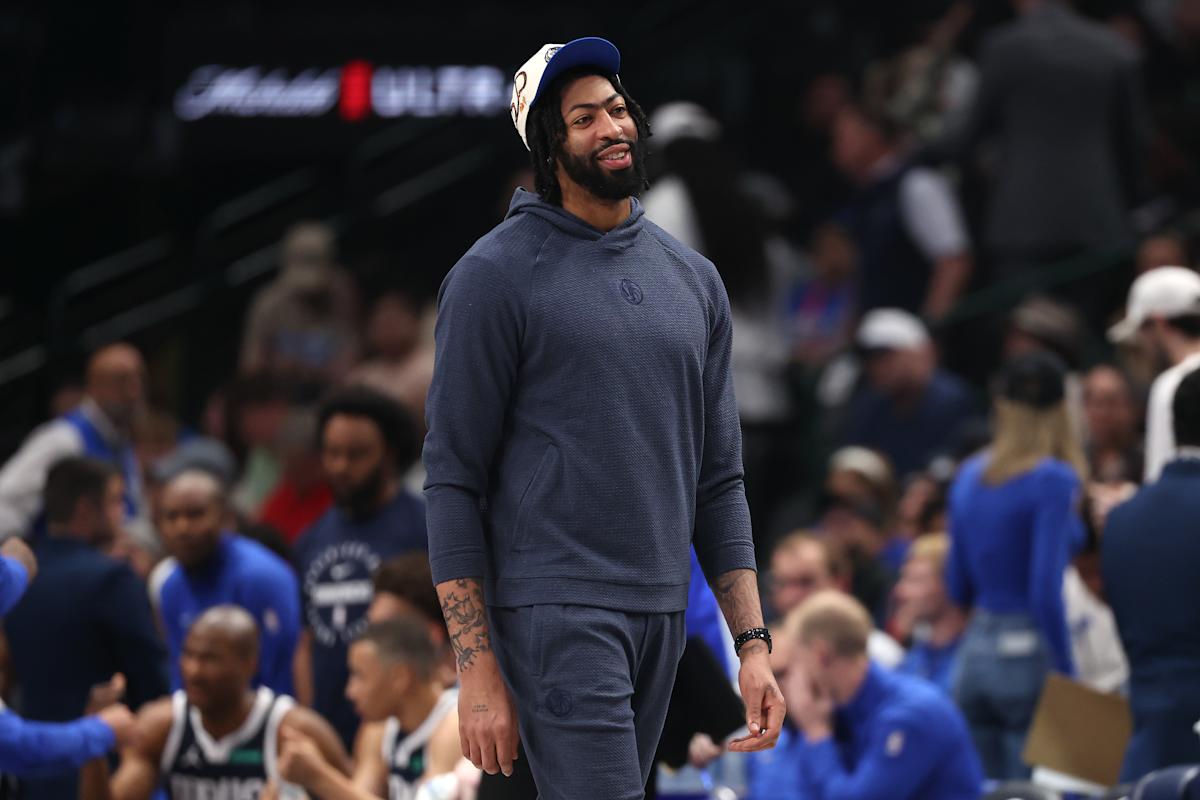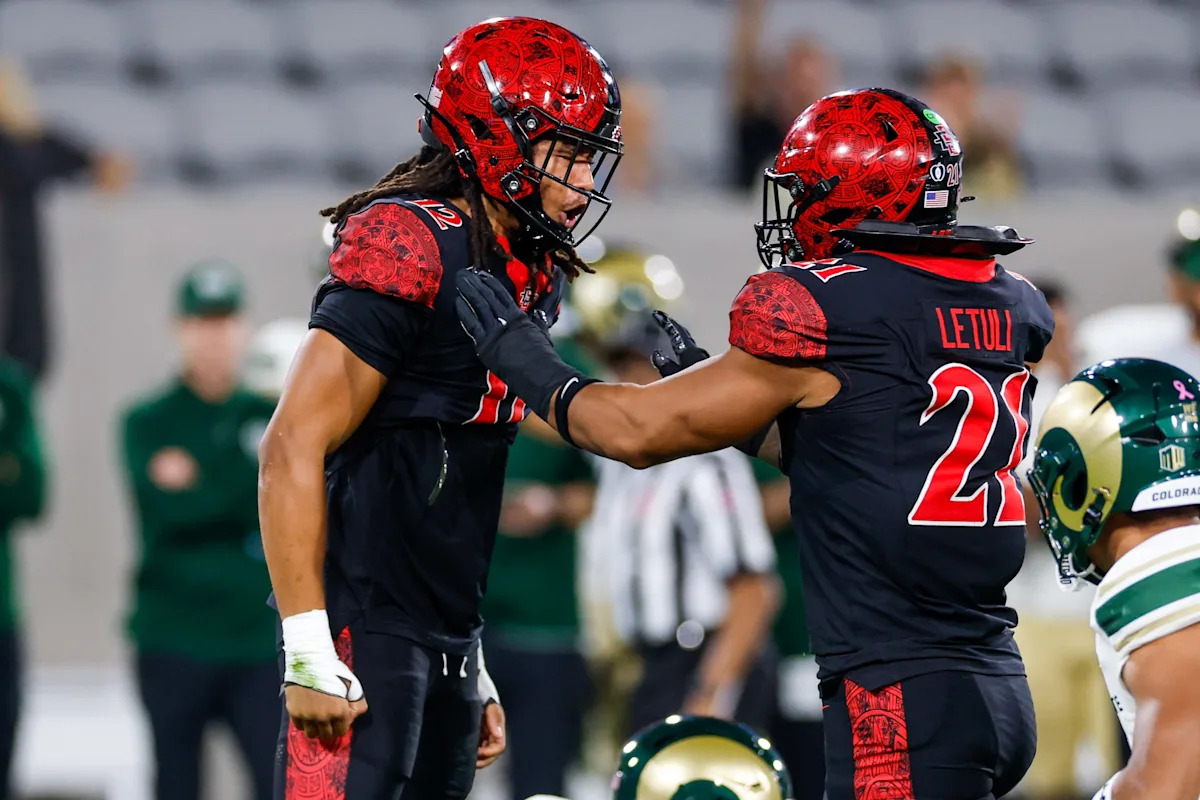One fun thing about the NBA preseason is figuring out where my views on a team differ from those of the consensus. I get a vague idea just by reading other people’s thoughts about the offseason, but the real test always comes later in the summer. That’s when rosters are complete, all my models have spit out their numbers, and I have something I can compare to an outside consensus.
That “outside consensus” is a moving target, of course, but there is a reasonable proxy for it in gambling markets. Preseason Las Vegas win-total over/unders, while having a slight bias on the “over” side (we’re all optimists, apparently), offer a useful benchmark for a team’s mid-tier outcome in the eyes of the general public.
With that said, my task is to pick five teams that I think are relatively likely to beat their over/under projections (I’ve used BetMGM’s numbers as of Sept. 19) and which ones are likely to fall short.
Before we start, however, it’s time for a performance review of my picks from a year ago. It turns out that revising my projection model before last season seems to have helped — or rather, un-revising it after some changes I made ahead of 2023-24 produced a subpar prediction performance.
Last season, I had the Cleveland Cavaliers, Detroit Pistons, Oklahoma City Thunder, Atlanta Hawks and Phoenix Suns beating their preseason numbers and went 4-for-5. Three of those teams, Cleveland, Atlanta and OKC, topped their preseason number by more than 10 wins, and Detroit and Cleveland did so by more than 15. Phoenix … not so much.
I have my work cut out to match my efforts from a year ago, but I’ll give it my best. Here are five teams, along with their over/under marks, that I think will exceed expectations for the coming season, starting with one that already set an extremely high bar:
Thunder (62.5)
The Thunder’s two biggest obstacles to beating this number are injuries and boredom. Last year, they won 68 regular-season games with a historic point differential while carrying the league’s youngest minutes-weighted roster, even with both of their key big men (Chet Holmgren and Isaiah Hartenstein) missing long stretches.
This year, they have the same team — the top 13 players on the depth chart are exactly the same — and are basically in a “name your win total” scenario. They can probably win 70 if they go all out and sprint through the tape, but that seems unlikely, as NBA teams have become much smarter about leaving gas in the tank for the games that truly matter in May and June.
However, the competitiveness of the rest of the Western Conference should encourage the Thunder to push hard deep into spring to ensure they have the top seed in the playoffs. Plus, a team like Cleveland or Orlando in the East may rattle off a high enough win total to keep OKC sufficiently motivated to maintain home-court advantage in a potential NBA Finals matchup.
The Thunder also have enough depth to rack up wins even if they’re resting players in the second half of the season. This team is strong enough that several things can go wrong, and they can still get to 63 wins. I’m surprised the over isn’t significantly higher.
Clippers (48.5)
The Clippers may be dealing with a huge penalty from the league office at some point, but unless Adam Silver voids Kawhi Leonard’s contract before Christmas, I have a hard time seeing how they end up winning fewer than 50 games. Last year’s edition won 50, with the league’s fifth-best scoring margin, with Leonard playing just 37 games.
While age is certainly a concern, the Clippers’ old guys have one important thing in their favor: All of them were good last season. Leading that group is James Harden, who played 79 games in his age-35 season. He can probably take a few more days off this season because the Clippers have some other people who can actually dribble, importing Chris Paul and Bradley Beal in the offseason. They also have a real backup center in Brook Lopez, who gives the Clippers a stretch-five option and can take some of the strain off starter Ivica Zubac.
In terms of withstanding the regular-season grind, few teams are better positioned than LA. The Clippers can come in with a second unit of Paul, Kris Dunn, Bogdan Bogdanović, Derrick Jones, Jr. and Lopez that could hang with most teams’ starters. LA also patched its biggest weakness by finally getting a legit power forward, parlaying Norman Powell’s career year into John Collins once it became clear it could get Beal to take Powell’s spot.
You can argue for some regression from key players, notably Zubac (coming off a career year) and Harden (who may struggle to replicate his previous work at age 36), and that could provide a slight headwind. But the Clippers have massively fortified the roster and have enough quality depth to keep their old guys’ legs fresh.
Jimmy Butler and Stephen Curry celebrate after a basket against the Houston Rockets during last season’s playoffs. (Kelley L. Cox / Imagn Images)
Warriors (45.5)
I’m flabbergasted that Golden State’s projected win total is so low. The Warriors went 30-11 from the time they acquired Jimmy Butler until Stephen Curry hurt his hamstring in Game 1 of the second round in Minnesota. That’s a half-season of excellence that should stamp them as a fairly legitimate contender in the West.
First, let me play devil’s advocate: Golden State is old, especially with key players Curry, Butler and Draymond Green all in their mid-30s. There’s a scenario where stuff goes off the rails fast. The Jonathan Kuminga saga still hangs over the team as we enter training camp, and baked into my estimate is an assumption that Kuminga, Al Horford, De’Anthony Melton and Gary Payton II all will eventually sign with the Warriors.
That said, this win total just isn’t that hard to top. The Warriors won 48, 46, 44 and 53 games the past four seasons, and that was without Butler. And the NBA in general has a “bubble” of teams that end up winning 45 to 50 games because of the late-season divide, when playoff teams keep pushing while laggards start tanking. Last year, 13 teams won at least 46 games; the year before, an amazing 18 teams won at least 46. Do we not think the Warriors can at least be one of the league’s 13 best teams?
If the Warriors are in a position where they’re anywhere close to 45 wins down the stretch, they’re likely chasing every single win to avoid the Play-In Tournament and/or maximize their playoff seeding. That’s how they’re likely to top this number even if they end up being slightly disappointing on the floor. They’d have to be truly mid or worse to fall short here.
Bulls (32.5)
Over the last three seasons, the Bulls have won 39, 39 and 40 games, and they made the Play-In in each of those three seasons. I have a hard time seeing how the script for this season ends up being much different, which is why I’m amazed that their over/under is so low. To achieve that over/under would mean that the Bulls fell out of the Play-In race, even in the lowly East, and fell out by such a margin that they started tanking late in the year, which is a strategy this franchise has never embraced.
I also struggle to see how worst-case scenarios could turn out that badly for these guys. Chicago isn’t good by any means, but it has enough depth that it should survive the regular-season slog in relatively good shape. My projections value 13 of their 15 players at above replacement level, with the 15th being rookie Noa Essengue. (The other one is, um, starting center Nikola Vučević. Let’s move on.)
Anyway, “no terrible minutes” isn’t an upside strategy, but it delivers a pretty reliable floor. The Bulls also have some upside outs in the second-year version of Matas Buzelis, the still-young Josh Giddey and the fact that every key player except Vučević is in their 20s.
The Bulls didn’t exactly fall apart after the Zach LaVine trade in 2024-25, going 17-13 in their final 30 games, and they’re bringing back essentially the same team. Domination isn’t in the cards, but Vegas has set the bar ankle-high. I would be very surprised if the Bulls lost 50 games in the East.
Jazz (18.5)
Jazz will be bad this season, mostly because the Jazz will be motivated to be bad. Finishing with one of the league’s bottom four records is imperative, as it ensures a top-eight protected draft pick that they owe to the Thunder won’t be conveyed. (After this season, that obligation vanishes, and the Thunder get nothing.)
Nonetheless, 18.5 wins is an incredibly low bar. (Not so low that the Jazz can’t hit it, mind you — they only won 17 games a year ago.) But this season, they should be better despite themselves. Mostly, that’s because (if you watched any of EuroBasket) Lauri Markkanen looks back to his All-Star form, vastly better than the sore-back-addled version of Markkanen we saw last season.
To give you an idea of how low that 18.5 figure is, only nine teams in the last decade have finished a season with 18 or fewer wins (prorating for the two COVID-shortened seasons). None of the others had a healthy All-Star who was on the roster the entire season. And yes, I do expect Markkanen to be on the roster all year. (Veterans on expiring deals such as Kyle Anderson, Kevin Love and Georges Niang? Not so much.)
Additionally, some of the more tragic minutes the Jazz handed to youngsters can’t possibly get any worse. Among players with at least 1,000 minutes played, Cody Williams and Isaiah Collier were two of the four worst players in the league by BPM. They’ll either play better or lose minutes to other new young players, and no matter how raw this season’s crop is (led by Ace Bailey), they’ll have trouble replicating the negative stats of last season’s first-round duo.
This takes us to the other point about Utah: Yes, I expect them to engage in some late-season shenanigans if they need to ensure their place in the bottom four. But the win total required to cement a bottom-four position is likely to be in the high 20s, not anywhere near 18. My projected fifth-worst team has 30 wins, which means Utah should be comfortably in the clear to keep its draft pick by mid-March. Even in the West, a Utah team with Markkanen and Walker Kessler that at least sort of tries should be able to avoid 60 losses.
(Top photo of Shai Gilgeous-Alexander, Aaron Wiggins and James Harden: Joshua Gateley / Getty Images)






















